UTDesign CS Capstone Projects Provide CS & SE Seniors with Real-World Experiences before Graduation

The UTDesign Senior Capstone Project is the culmination of the undergraduate experience, where the knowledge students have gained throughout the course of their college education is applied to a major design project. The pinnacle of the experience is the UTDesign CS Expo, where teams of CS and SE students come together one last time at the end of every semester to present their final capstone projects to a room full of their peers, UT Dallas faculty members, company mentors, and industry professionals.
Last fall’s expo had thirty-six teams ranging from three to five members, each of which presented a unique, innovative project. There was a wide range of projects shown at the Expo. One project involved a Vending Machine Prediction Program that worked to improve the efficiency of Keurig Dr. Pepper vending machine delivery systems by using the ARIMA machine learning algorithm and historical delivery data to provide better predictions of when products run low in order to save drivers from visiting already stocked machines. Another project involved a group which developed a wrapper application to launch games designed to aid the recovery process of physical therapy patients.
For their presentations, each team was allowed to use only one slide to present their work. Brevity was critical in communicating the goal of the project, design of the project, project testing, validation plan, results achieved, project management approach, and acknowledgment of sponsors – all within an allotted five minutes. Projects were judged by the quality of technical content within the presentation – problem description, design approach, and implementation – as well as oral and visual presentation skills, which included effective use of the 5 minutes of presentation time, demonstrating a clear understanding of and ability to explain the social impact of the project, ability to explain the process followed for the project with support from related documentation, and the quality of technical content in the associated poster.
Among the corporate sponsors in last fall’s expo were Allstate Insurance, Aprima Medical Software, ATOS, Capital One, Citigroup, Collins Aerospace, Concentrix, Emerson, Encore Wire Corporation, Fidelity Investments, Gamut, IDEXX, Keurig Dr. Pepper, Raytheon, SignaPay, State Farm, Texas Biomedical Device Center, Tyler Technologies, and UT Dallas. Many of these companies have used the code that students developed and have put it into production within their respective companies. The capstone project course is taught by Dr. Miguel Razo, who is also the CS UTDesign Program Director. Dr. Razo is assisted by the UT Design Staff led by Assistant Dean Mr. Rod Wetterskog.

1st Place – DRIVELYTICS – Beaconless Telematics (State Farm) – Maliha Haque, Fariha Islam, Sonia Torres, Teena Jagan
This project aims to find a beaconless solution to collect auto telematics data using a standalone iOS application. The app will collect data using sensors located on the iPhone and will identify the vehicle using Bluetooth technology. At the end of each trip, the data collected from the sensors will be used to generate a report with scores that determine how well the vehicle was driven during that trip. This solution will reduce the costs associated with using a beacon for telematics data gathering. This will also improve customer retention by incentivizing safer driving habits while also allowing customers to save money. Overall the application is a much more efficient solution to gathering data and associating trip data with vehicles under the insurance policy.

2nd Place – The Future of Cyber Situational Awareness (Raytheon) – Thomas Gray, John Hatch, Skyler Hill, Tristan Hill, Ashley Zamecnik – Corporate Sponsor: Alfonso Lopez – Faculty Advisor: Dr. B. Prabhakaran
CyberHUD is a proof-of-concept for augmented reality technology in security. It is an AR mobile application and cloud infrastructure designed to interact with data from public networks and devices. The goal of CyberHUD is to improve network information usage and knowledge by offering a visual platform for data in the local vicinity. The application overlays existing information over the mobile device’s video to show typically invisible data in a real-world context. With a modular design and further extensions in mind, the project poses to be a unique tool for quick network data inferences and visualizing networks in security, operations, and maintenance scenarios.
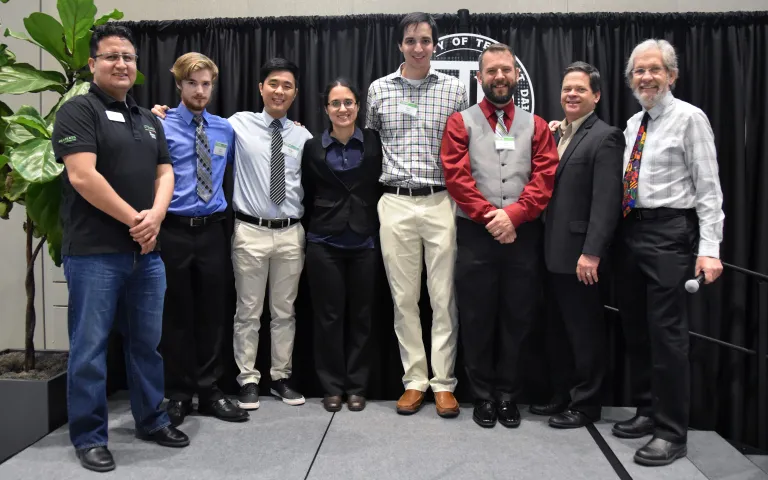
3rd Place – Using Virtual Reality for Equipment Maintenance (Atos) – Brian Duncan, David Thigpen, Minkyu Kim, Sharon Lougheed, and Xavier Cadot
This project aims to build a simple virtual reality (VR) training system for a technician to perform maintenance in an immersive 3D virtual environment. An accompanying tutorial utilizes audio and visual cues to aid the technician in identifying a failed component, replacing the component, and bringing the system back to a working state. The subject of maintenance tasks is a commercial diesel generator. The primary focus is on positive user experience with high interaction fidelity. The project demonstrates the advantage of using VR for technical training, mainly when the training is difficult or even dangerous in a real-world environment. It also offers a potential for high throughput of specialized and concurrent training, without burdening real-world equipment and resources.
ABOUT THE PROGRAM
For one semester, students in the Computer Science and Software Engineering BS program are required to create senior projects as part of the UTDesign Program, a team-based capstone course for Jonsson School students that connect companies to teams of senior students. This final project allows students to apply concepts they have learned in past classes, engage in a full-scale design process, as well as practice their project-management, problem-solving skills. During the course of each project, each team of students has two coaches: a corporate mentor, who acts as a technical point of contact for the company, and a faculty advisor who is an expert or has some degree of technical familiarity with the project at hand. For each UTDesign project, teams of students often put in up to ten hours of work each week. The involvement of the company mentor is crucial for the success of the project and the learning process for the student. Corporate experts mentor the team to assist them in meeting benchmarks during the project and help the students with learning new technology used in the company. In doing so, the students are able to benefit from the corporate experience as well as gain an appreciation for teamwork.
Companies are not alone in benefiting from the program, as students working on the projects also grow from the experience of finding solutions for sponsoring companies’ projects by offering innovative ideas, forward-thinking approaches to solving problems, and bold and creative solutions. Students enrolled in the program are given the opportunity to fully engage in the design process and use their project-management skills, including planning, budgeting, communication, scheduling, and presentations. This is in conjunction with applying critical thinking and problem-solving skills while working on projects applicable to a variety of companies, consumers, or UT Dallas faculty members’ research.
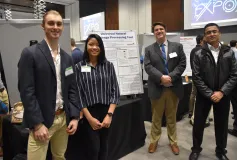
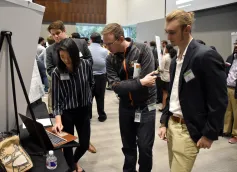
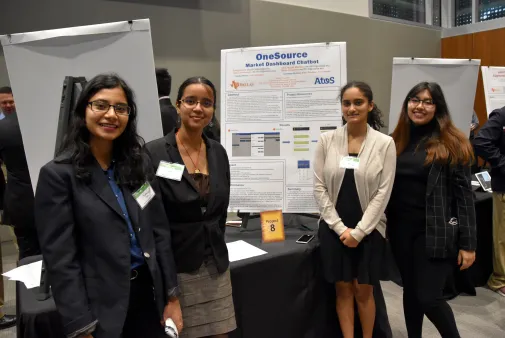
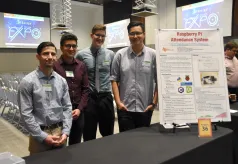
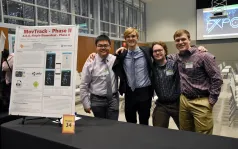

Click here to view more photos from the Fall 2019 UTDesign CS Expo.
ABOUT THE UT DALLAS COMPUTER SCIENCE DEPARTMENT
The UT Dallas Computer Science program is one of the largest Computer Science departments in the United States with over 2,800 bachelors-degree students, more than 1,000 master’s students, 190 Ph.D. students, 52 tenure-track faculty members, and 41 full-time senior lecturers, as of Fall 2018. With The University of Texas at Dallas’ unique history of starting as a graduate institution first, the CS Department is built on a legacy of valuing innovative research and providing advanced training for software engineers and computer scientists.




